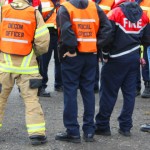By Dr. Shana Nicholson, faculty member, Emergency and Disaster Management at American Military University
For almost 20 years, I have been an active member of the emergency medical services (EMS), fire science, and public safety profession. I have seen many advancements during my time in the field and I am gratified to see yet another important area being developed—community involvement during a crisis. Such involvement by average citizens includes active participation in planning and practicing to respond to a crisis in the community.
The value of community participation in disaster mitigation and response has been highlighted by examples of bystander support during recent crises such as the Boston Marathon bombing, hurricane response, and tornados. One program created to better organize community participation is Community Emergency Response Teams (CERT).

According to the Federal Emergency Management Association (FEMA):
“CERT is a positive and realistic approach to emergency and disaster situations where citizens will be initially on their own and their actions can make a difference. Through training, citizens can manage utilities and put out small fires; treat the three killers by opening airways, controlling bleeding, and treating for shock; provide basic medical aid; search for and rescue victims safely; and organize themselves and spontaneous volunteers to be effective.”
There are 10 basic steps to forming a CERT:
- Review your area for existing public safety resources
- Consult with these professionals for their knowledge on the needs of the community during a disaster
- Consult and obtain approval from officials for the formation of a CERT team in your area. This may also help you gain funding for the training that will be required
- Recruit community participants from local organizations, business, schools and hospitals. Remember that every person in your area could have knowledge that would benefit your team, you just have to ask
- Identify potential hazards, safety issues, and resources in your community
- Set up training for such things as CPR, first-aid, hazmat, and other topics that could be beneficial including food production and water cleansing
- Hold practice events and CERT sessions
- Re-evaluate goals and missions
- Be prepared
- Enjoy your service and your efforts to keep the community strong
Emergency services is a component of the nation’s critical infrastructure and CERT programs can play a critical role in protecting our communities and our loved ones.
Have you had experience starting or being involved in a CERT program in your area? What other advice would you give to citizens who want to be involved in emergency preparation and response?
About the Author: Dr. Nicholson has more than 20 years of emergency medical and fire science service experience. Her professional background also includes government, social services, and nonprofit administration. She is currently a faculty member in emergency and disaster management at American Military University. She received a bachelor’s in criminal justice from Fairmont State University, a master’s of science in Human Services with a specialization in criminal justice from Capella University and a PhD in human services with a counseling specialization also from Capella University.
Comments are closed.